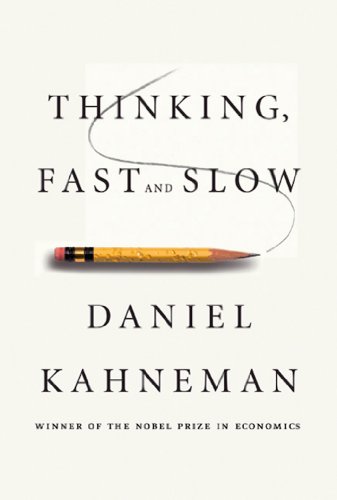

This article is an excerpt from the Shortform summary of "Thinking, Fast and Slow" by Daniel Kahneman. Shortform has the world's best summaries of books you should be reading.
Like this article? Sign up for a free trial here .
What is price anchoring? How does it affect sales, and how does it affect what you pay for your purchases or how much you donate to charity?
Price anchoring is the practice of giving a price point for a sales item or donation to influence consumer or donor decisions. Price anchoring is based on the psychological principle that, when shown an initial piece of information, you bias toward that information, even if it’s irrelevant to the decision at hand.
We’ll cover how price anchoring works and how you can keep it from overinfluencing your decisions if you’re the customer.
The Practice of Price Anchoring
When shown an initial piece of information, you bias toward that information, even if it’s irrelevant to the decision at hand. For instance, in one study, when a nonprofit requested $400 (the price anchor), the average donation was $143; when it requested $5 (the price anchor), the average donation was $20. The first piece of information (in this case, the suggested donation) influences our decision (in this case, how much to donate), even though the suggested amount shouldn’t be relevant to deciding how much to give.
In another example of price anchoring, in online auctions, the Buy Now prices serve as anchors for the final price.
Arbitrary rationing, like supermarkets with “limit 12 per person,” makes people buy more cans, compared to when there’s no limit. (Shortform note: this might also be confounded as a signal of demand, indicating quality or scarcity.) This is an example related to price anchoring.
Note how in several examples above, the number given is not all that relevant to the question at hand. The requested donation size should have little effect on how much you personally want to donate. But it still has an effect.
Sometimes, the anchor works because you infer the number is given for a reason, and it’s a reasonable place to adjust from. But again even meaningless numbers, even dice rolls, can anchor you.
Other Examples of Anchoring
Anchoring doesn’t just apply to price anchoring in stores, auctions, and for charity donations. Anchoring describes the bias where you depend too heavily on an initial piece of information when making decisions.
In quantitative terms, when you are exposed to a number, then asked to estimate an unknown quantity, the initial number affects your estimate of the unknown quantity. Surprisingly, this happens even when the number has no meaningful relevance to the quantity to be estimated.
Examples of anchoring:
- Students are split into two groups. One group is asked if Gandhi died before or after age 144. The other group is asked if Gandhi died before or after age 32. Both groups are then asked to estimate what age Gandhi actually died at. The first group, who were asked about age 144, estimated a higher age of death than students who were asked about age 32, with a difference in average guesses of over 15 years.
- Students were shown a wheel of fortune game that had numbers on it. The game was rigged to show only the numbers 10 or 65. The students were then asked to estimate the % of African nations in the UN. The average estimates came to 25% and 45%, based on whether they were shown 10 or 65, respectively.
Related to price anchoring, the anchoring index measures how effective the anchor is. The index is defined as: (the difference between the average guesses when exposed to two different anchors) / (the difference between the two anchors). Studies show this index can be over 50%! (A measure of 100% would mean the person in question is not only influenced by the anchor but uses the actual anchor number as their estimate; conversely, a measure of 0% would indicate the person has ignored the anchor entirely.)
- For example, one study asked Group A two questions: 1) Is the tallest redwood taller or shorter than 1,200 feet? and 2) What do you think the height of the tallest redwood is? They asked Group B the same two questions, except the anchor in the first question was 180 feet rather than 1,200 feet.
- Did the anchors in the first question affect the estimates given in answer to the second question? Yes. The Group A mean was 844 feet and the Group B mean was 282 feet. This produced an anchoring index of 55%.
Insidiously, people take pride in their supposed immunity to anchored numbers. But you really don’t have full command of your cognition.
- When you’re buying a house, real estate agents claim to be immune to listing prices when negotiating prices for you, when the opposite is true. The listing price strongly anchors agents to the bid that they make.
(Shortform note: the idea of anchoring can be taken beyond numbers into ideas. If someone tells you an extremely outrageous idea, then later gives you a second idea that is less extreme, the second idea sounds less controversial than if he had presented it to you first. That’s because you’ve anchored to the first extreme idea.)
Why Price Anchoring Works
How does price anchoring (and anchoring in general) work in the brain? There are two mechanisms, based on the two systems of thinking.
System 2: You start with the exposed number as an initial guess, then adjust in one direction until you’re not confident you should adjust further. At this point you’ve reached the edge of your confidence interval, not the middle of it.
- Say you were given a piece of paper and asked to draw from the bottom up until you reached 2.5 inches. Then you were asked to draw, on a separate sheet of paper, from the top down until 2.5 inches were left. The first line would likely be shorter than the space below the second line. This is because you’re not really sure what 2.5 inches looks like. If you think of uncertainty as a range, you stop drawing at the bottom edge of your uncertainty, when you first lose confidence. You stop when you reach the edge of the confidence range, not the middle of it.
- You drive much faster on city streets coming off the highway than you would otherwise because your anchor is higher than when you start from, say, a speed of zero in your driveway. You adjust relative to your anchor.
- If asked about the boiling temperature of water at the top of Mount Everest, you know that the boiling point of water at sea level is 100° Celsius, but you know that can’t be the answer to the question, since the top of Mount Everest is obviously not at sea level. To estimate the answer, you use 100° Celsius as your anchor and adjust downwards.
- Evidence that System 2 is involved: People adjust less from the anchor when their mental resources are depleted and, therefore, System 2 isn’t working well.
System 1: The anchor invokes associations that influence your thinking. System 1 tries to construct a world in which the anchor is the true number.
- Thinking of Gandhi as age 144 primes associations of old age. This causes a higher estimate.
- Evidence that System 1 is involved: Asking participants whether the average temperature was higher or lower than 68°F made it easier to recognize summer words (like “beach”) in a list. Similarly, asking about 41°F made it easier to identify winter words (like “ski”).
Overcoming Price Anchors (And Other Anchors)
In negotiations, when someone offers an outrageous anchor, don’t engage with an equally outrageous counteroffer. Instead, threaten to end the negotiation if that number is still on the table.
(Shortform suggestions:
- If you’re given one extreme number to adjust from, repeat your reasoning with an extreme value from the other direction. Adjust from there, then average your final two results.
- When estimating, first adjust from the anchor to where you feel like you should stop. Then deliberately go much further to the point that you want to dial it back. Average the two points.
- Move your estimate from the anchor to the minimal or maximal amount it could be.)
If you’re a salesperson, take advantage of price anchoring; if you’re a consumer, be wary.
———End of Preview———

Like what you just read? Read the rest of the world's best summary of "Thinking, Fast and Slow" at Shortform . Learn the book's critical concepts in 20 minutes or less .
Here's what you'll find in our full Thinking, Fast and Slow summary :
- Why we get easily fooled when we're stressed and preoccupied
- Why we tend to overestimate the likelihood of good things happening (like the lottery)
- How to protect yourself from making bad decisions and from scam artists






